100th Anniversary Great Nave Tour at the Cathedral of St. John the Divine
Celebrate the 1925 construction of the stunning nave inside the world's largest Gothic cathedral!


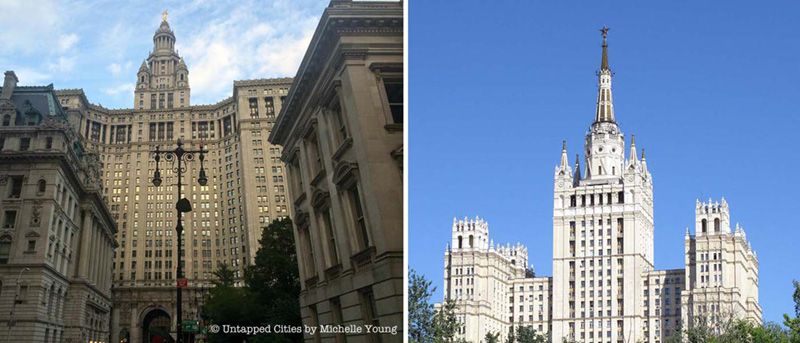
Left, Municipal Building in Lower Manhattan. Right, The Kudrinskaya Square Building. Image via Wikimedia: Lodo27
New York City’s iconic skyline has unsurprisingly graced the front of postcards and various screen savers. After all, our sprawling metropolis is heralded for its stunning architecture; it’s home to some of the world’s most picturesque residential and commercial buildings — many of which have served as templates or inspiration for other structures around the world. Here are just a handful of sister buildings we’ve encountered over the years:
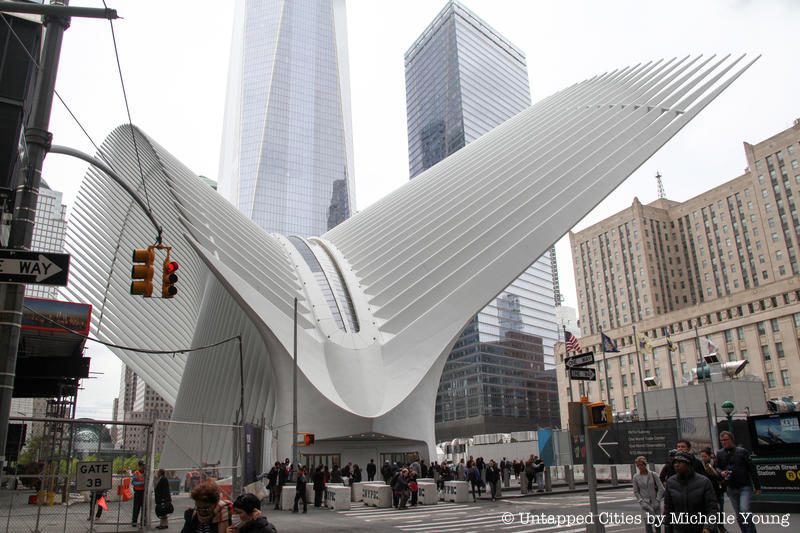
The Gare Saint-Exupéry train station outside Lyon, France was also designed by Santiago Calatrava, and was completed in 1994. Serving as a terminal for TGV (high speed) trains, it connects the city of Lyon with the airport. Its design is inspired by the series of “Bird” sculptures by Calatrava and was originally planned for the 1992 Winter Olympics in Albertville.
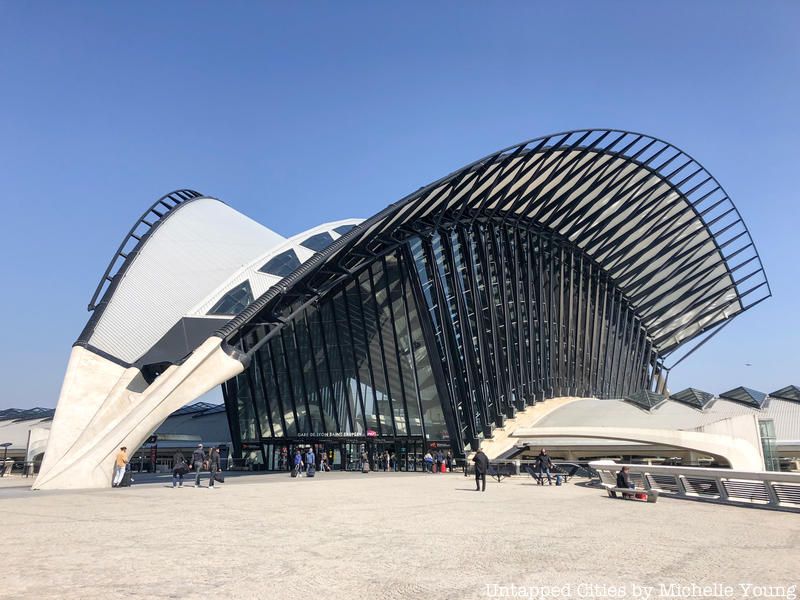
The Gare Saint-Exupéry is clearly a precursor to the World Trade Center Transportation Hub, which Calatrava had also described as bird in flight. The Lyon train station cost 750 million French francs at the time, which would be about 114 million Euros if converted today.
Also, check out 10 Things to Know About NYC’s World Trade Center Transportation Hub.

Left, Municipal Building in Lower Manhattan. Right, The Kudrinskaya Square Building. Image via Wikimedia: Lodo27
The 40-story Manhattan Municipal Building — built to meet the city’s need for additional governmental space — is quite the architectural feat. William M. Kendall of the noted architectural firm McKim, Mead & White designed the building, which has influenced various structures across other American cities, including the Terminal Tower in Cleveland and the Wrigley Building in Chicago.
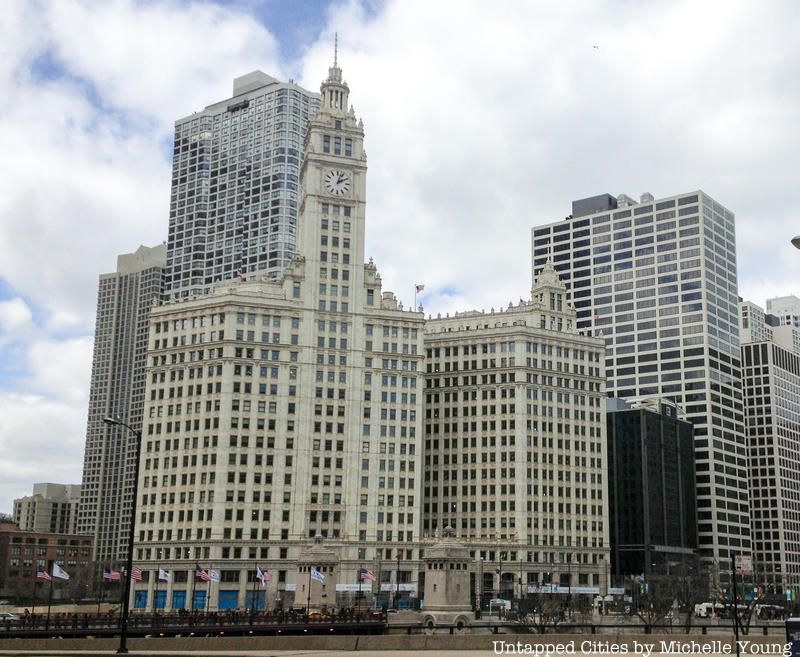
In addition, it served as the prototype to Moscow’s Seven Sisters, a series of seven “cathedral-like” skyscrapers, designed in the Stalinist style (Hotel Ukraina, Kotelnicheskaya Embankment Apartments, the Kudrinskaya Square Building, the Hilton Moscow Leningradskaya Hotel, the Ministry of Foreign Affairs main building, the main building of the Moscow State University, and the Red Gates Administrative Building).
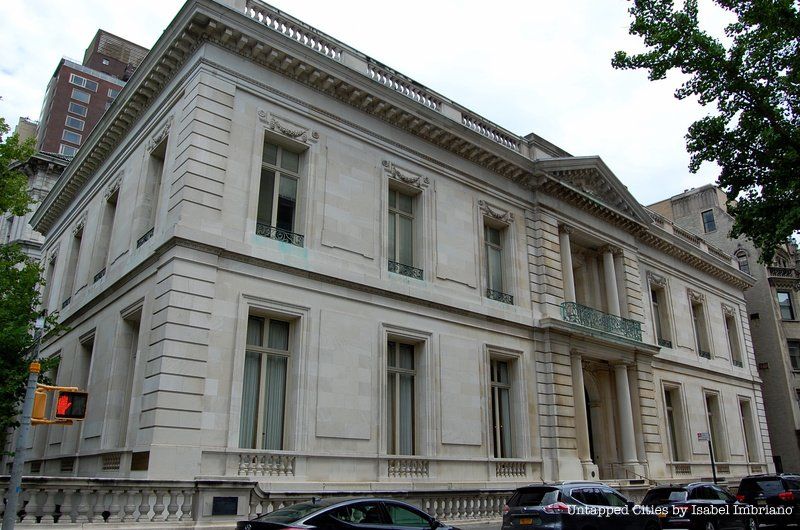
Currently home to the Art Center of Chateau Pope Clement, the 1773 Chateau Labottiere in Bordeaux was built for the Labottiere Brothers, who were book sellers. Its sister building can be found on East 78th Street, where you’ll find the James B. Duke House, one of the great surviving mansions of “Millionaire’s Row.”
James Buchanan Duke, one of the founding partners of American Tobacco Company and the father of Doris Duke, hired American architect Horace Trumbauer to design his mansion, which now houses New York University’s Graduate Institute of Fine Arts. It’s obvious what Trumbauer’s design was inspired by.
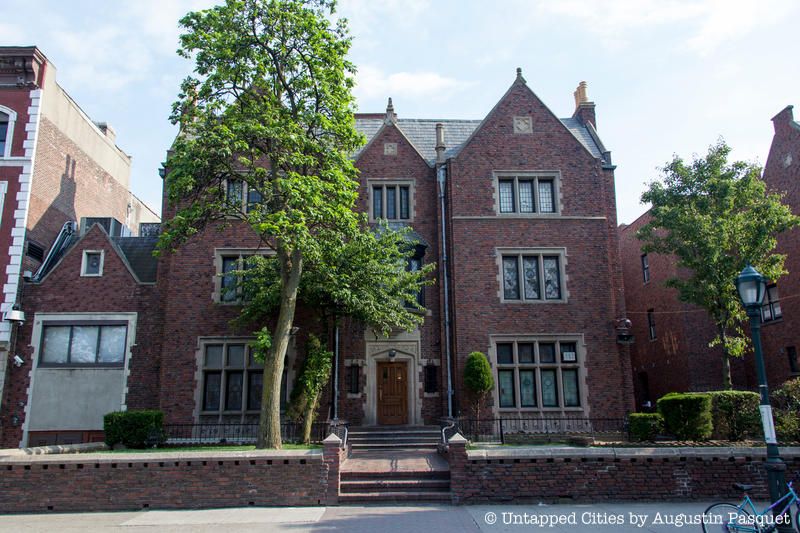
One particular building in Crown Heights, Brooklyn has doubles in more than a dozen places around the world. Located at 770 Eastern Parkway and housing the Chabad-Lubavitch Orthodox Jewish spiritual center, the building has such a strong symbolic hold that followers of this religious group have replicated it as they’ve spread. The original building is the de facto headquarters for the Lubavitch and was once the workplace of Grand Rebbe Menachem Mendel Schneerson.
While none of the replicas are 100% exactly alike, certain key architectural elements tie them together: the three-part facade, the gabled roofs and central bay window. Andrea Robbins and Max Beacher, two photographers and a husband and wife duo, traveled the world for six years photographing the replicas.
Read more about 770 Eastern Parkway here.
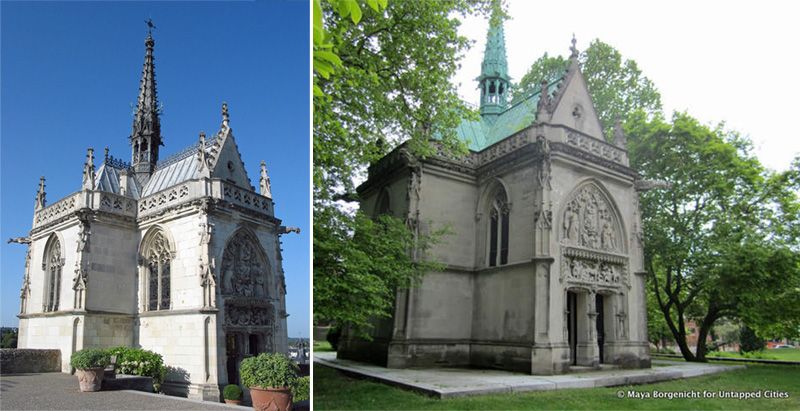 The Chapelle Saint-Hubert (left). Image via Arnradigue; Belmont Mausoleum (right); Image vis Maya Borgenicht
The Chapelle Saint-Hubert (left). Image via Arnradigue; Belmont Mausoleum (right); Image vis Maya Borgenicht
The Chapelle Saint-Hubert was built between 1491 and 1496 as part of Charles VIII’s remodeling of the Chateau d’Amboise. In the nineteenth-century, what were purported to be the bones of Leonardo da Vinci were entombed in the chapel and have since become a tourist destination.
The Chapelle of Saint Hubert inspired the 1910 Hunt & Hunt-designed Oliver Hazard Perry Belmont and Alva Erskine Vanderbilt Belmont Mausoleum in Woodlawn Cemetery. Belmont chose this chapel because of its designs relating to the hunt, or which Saint Hubert is the patron saint.
Also, read more about Ava Vanderbilt’s Final Resting Place in Woodlawn Cemetery.
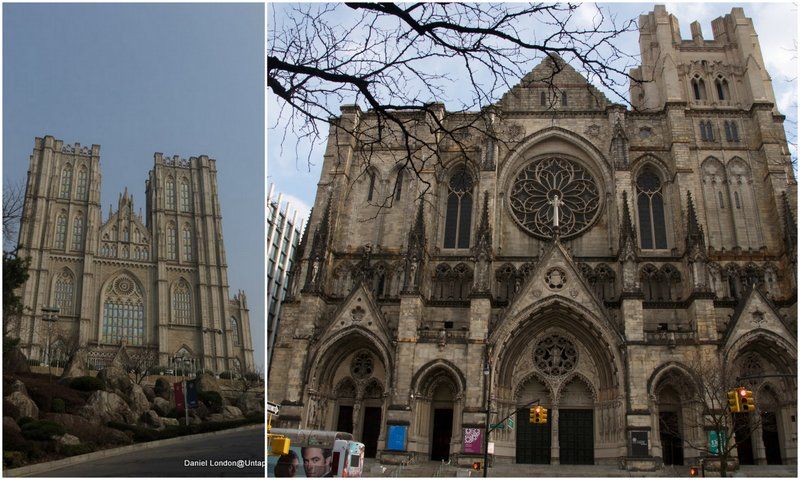 Peace Hall (left); St. John the Divine (right)
Peace Hall (left); St. John the Divine (right)
You may be surprised to find a replica of St. John the Divine in Morningside Heights nestled in the foothills of Seoul at Kyung Hee University. The chief auditorium of the campus, the utterly secular Grand Peace Hall, could be a more-complete version of St. John the Divine.
This extraordinary Kyung Hee University is the brainchild of an equally extraordinary man, Young Seek Choue, who founded the institution in 1951. Here, in a country divided by war and a world divided by ideology, Choue sought to establish a place of learning that would be devoted to the study of peace on an individual, societal, and global level. Today, Kyung Hee is one of the most prestigious universities in South Korea, and attracts scholars from around the world to its international studies programs.
While Moscow is home to seven doppelgängers of the same New York City building, China is welcoming an entire duplicated city. Construction began in 2008 for Yujiapua, a $50 billion “knock-off” of the Big Apple, which was originally scheduled to be completed in 2019. Located near the port city of Tianjin (and about 120 miles from Beijing), it will offer 164 million-square-feet of office space, spread out over an area that’s reportedly larger than the Financial District in Manhattan (the New York City version). It even comes complete with its very own Rockefeller Center and Twin Towers.
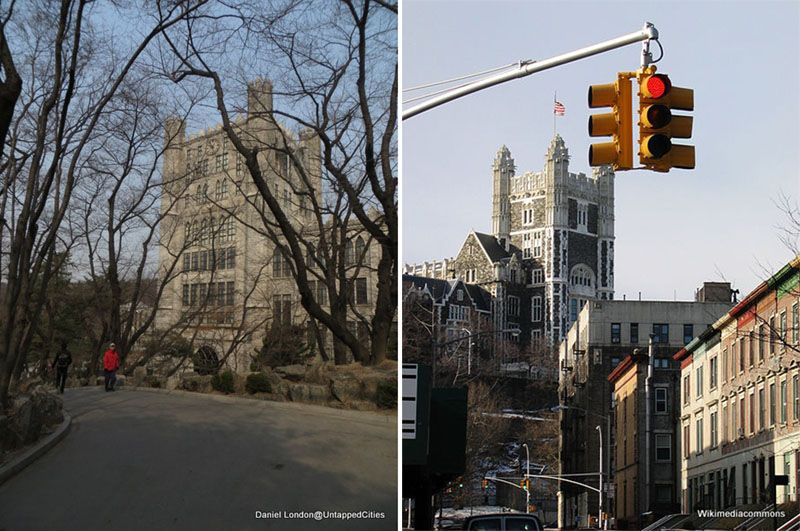
Kyung Hee Central Library (left); City College’s Shepard Hall (right)
Kyung Hee University’s central library also seems like a dead ringer of City College’s Shepard Hall, which was completed in 1907 by renowned architect George Post. Moreover, there are striking similarities between City College’s now demolished Lewisohn Stadium and Kyung Hee Stadium:
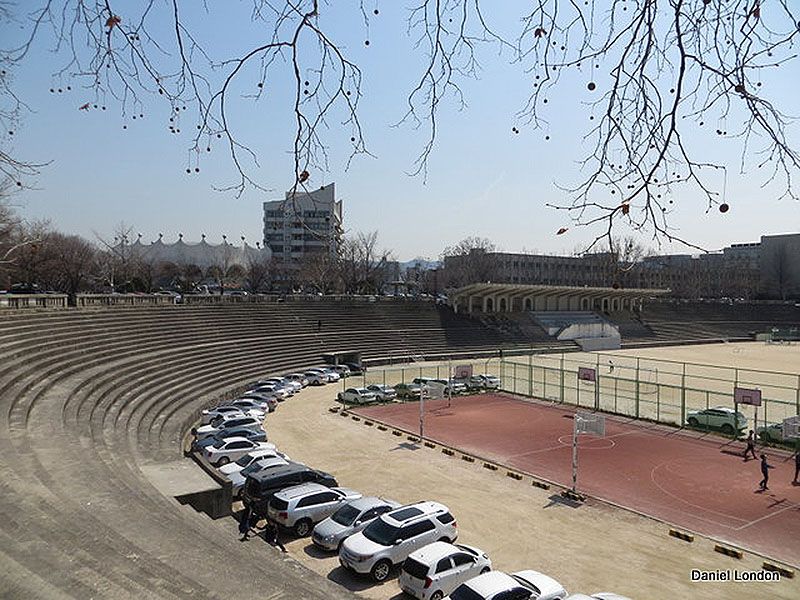 Kyung Hee Stadium
Kyung Hee Stadium
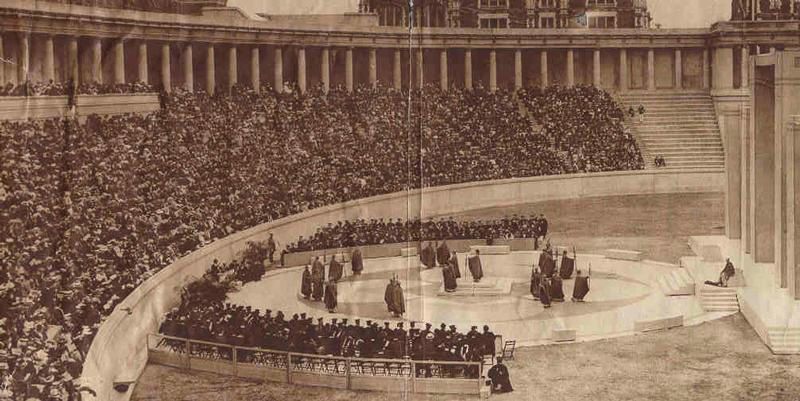
Lewisohn Stadium. Image via Wikimedia: public domain
Also, check out Kyung Hee University’s Alma Mater, which bears a striking similarity to Columbia’s:
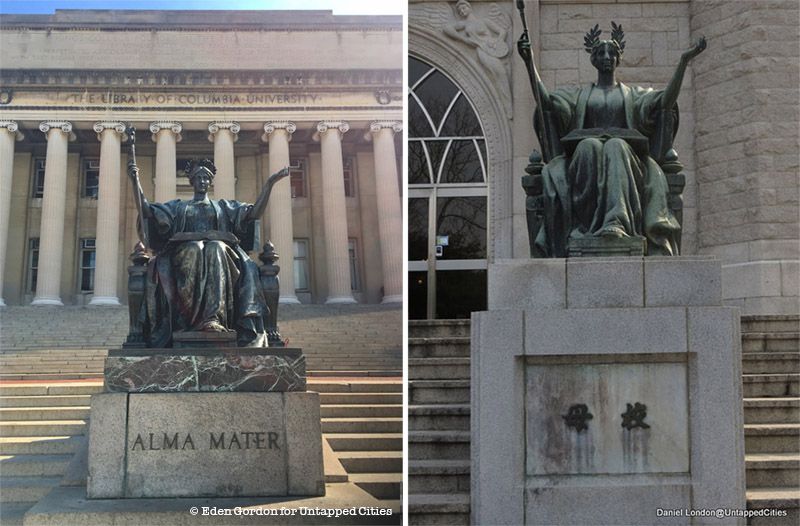
What is going on? Most of the material on Kyung-Hee’s architectural history is in Korean. Dr. Choue, in trying to create a truly global university, was likely emulating the campus architecture within a paradigmatic global city, New York City. What might seem at first glance to be to be an example of post-modern, de-contextualized trickery was, at the time, a quite earnest effort to cultivate an international perspective within a new university.
 Western Electric Building in Kearny, New Jersey (left); Hawthorne Works in Cicero, Illinois. Image via Wikimedia: public domain
Western Electric Building in Kearny, New Jersey (left); Hawthorne Works in Cicero, Illinois. Image via Wikimedia: public domain
Untapped Cities founder, Michelle Young, spotted the Western Electric Building in Kearny, New Jersey, which has a sister building called Hawthorne Works in Cicero, a small suburb in Chicago. Between 1926 and 1986, the Kearny plant employed thousands of people, who produced a variety of supplies for the Bell System.
During its prime, it boasted the title of “the busiest manufacturing plant in the American Telephone and Telegraph Company’s empire.” Since then, the plant has drastically downsized as Western Electric established newer factories around the country. Like the facilities in Kearny, Hawthorne Works was once a large factory complex, which once employed 45,000 workers. It opened in 1905 and operated until 1983.
Next, check out NYC’s architecture inspired by Italy, Greece and France.
Subscribe to our newsletter